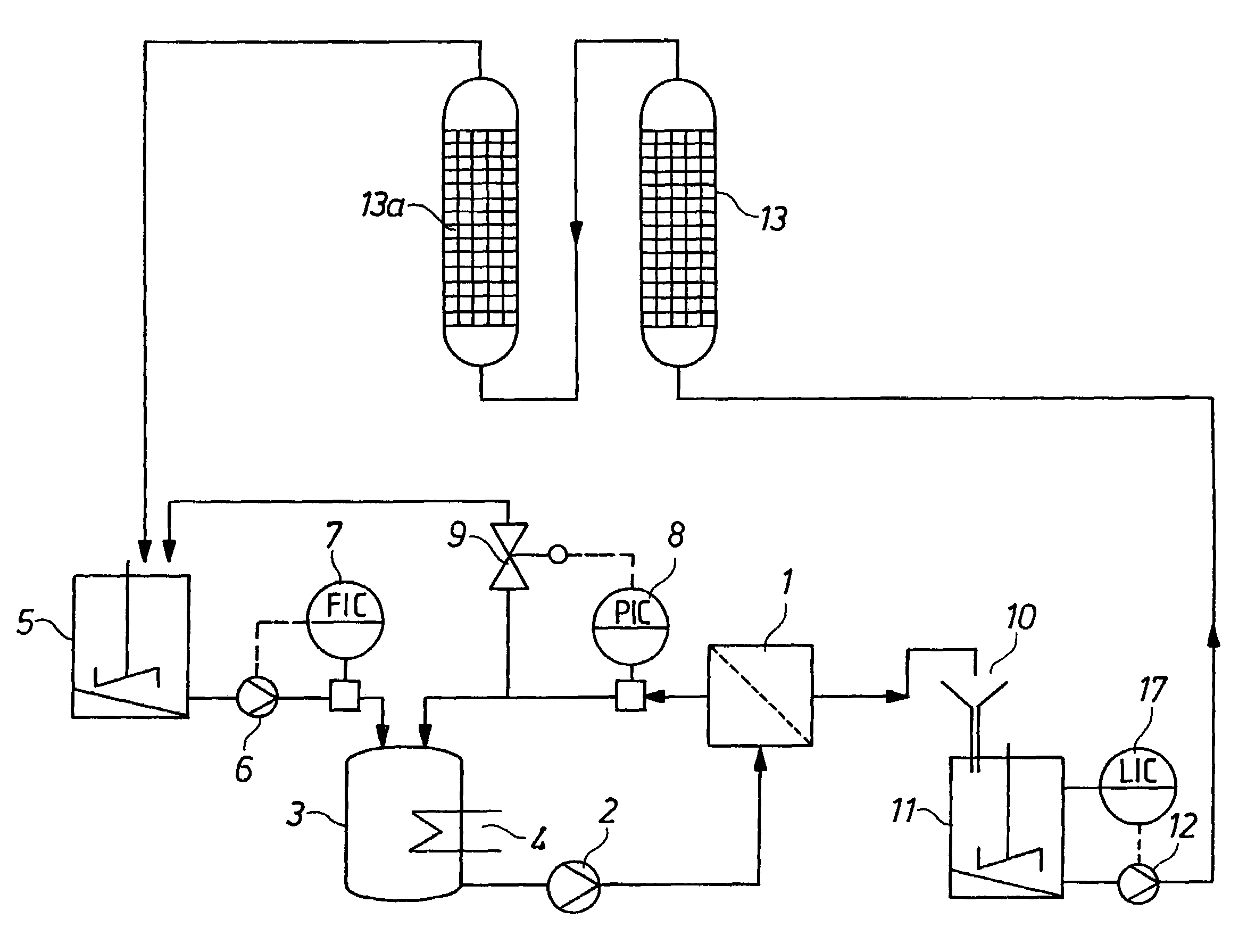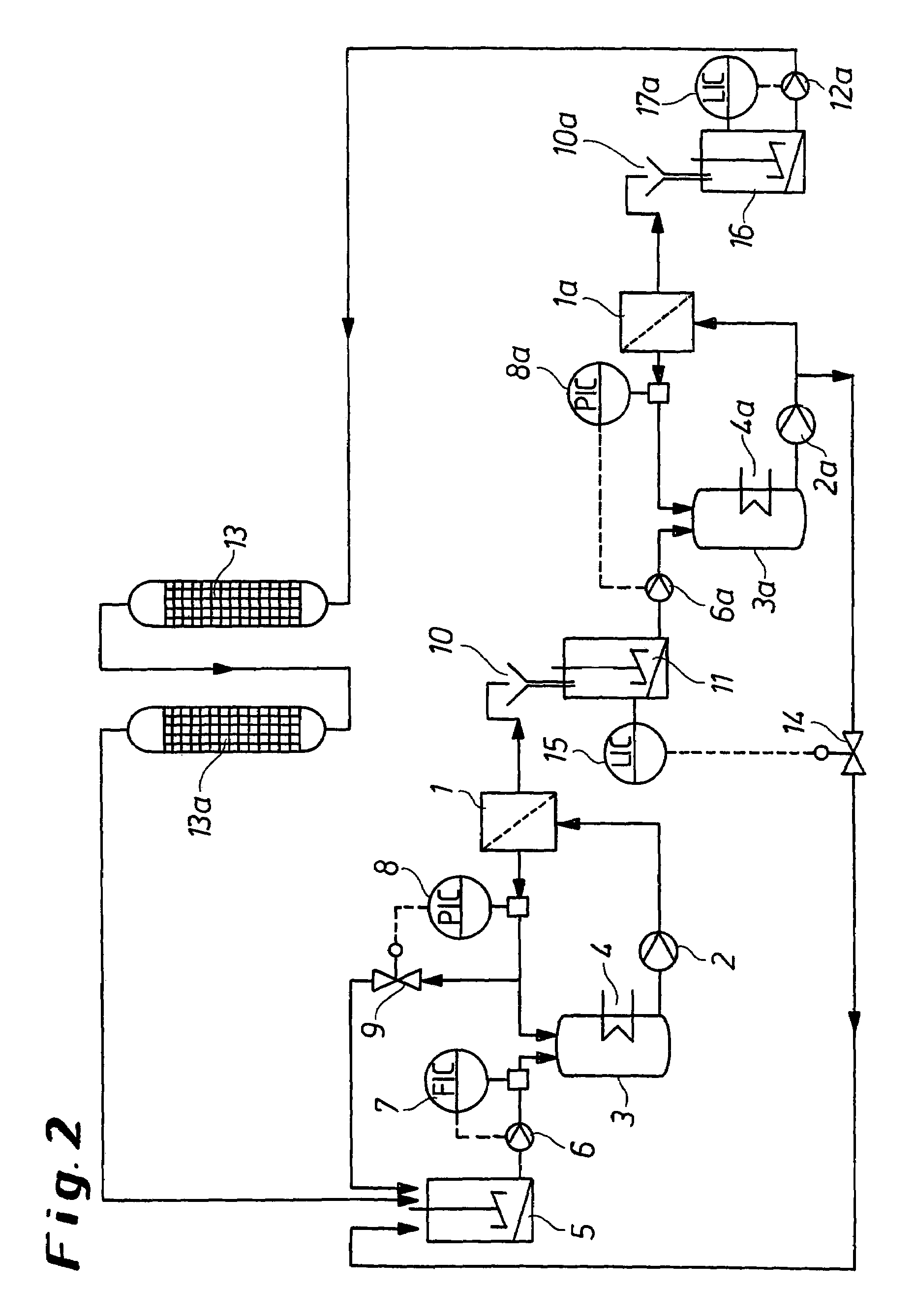Purification of ammonium metallate solutions
a technology of ammonium metallate and solution, which is applied in the direction of metal/metal-oxide/metal-hydroxide catalyst, water/sewage treatment by ion exchange, nuclear engineering, etc., can solve the problems of comparatively complicated process, inapplicability to economic practicability, and the inability to separate element potassium from molybdenum with considerable effort, etc., to achieve simple and economical
- Summary
- Abstract
- Description
- Claims
- Application Information
AI Technical Summary
Benefits of technology
Problems solved by technology
Method used
Image
Examples
example 1
[0066]According to the process variant as shown in FIG. 1, 7.4 m3 of ammonium dimolybdate solution having an Mo content of 150 g / l were introduced into the storage container (5). The contents of alkali metal impurities in the solution were 750 mg / l of K and 600 mg / l of Na. The remaining system was loaded with dilute ammonium dimolybdate solution having an Mo content of about 2 g / l of Mo. By means of high-pressure pump (6), circulation pump (2), flow controller (7) and pressure controller (8), a permeate flow of 4.6 m3 / h was established. The membrane filtration cell (1) used had a membrane area of 130 m2, a Nafion® membrane NFM 1120 being used as the membrane. The permeate emerging from the membrane filtration cell (1) flowed via the free outflow (10) into the container (11) and was passed by means of pump (12) via the cation exchange columns (13) and (13a) in order to remove the alkali metal impurities from the permeate. The cation exchange columns (13) and (13a) were loaded with th...
example 2
[0068]The procedure was as in the process variant as shown in FIG. 2. The storage container (5) was loaded with 10 m3 of an ammonium molybdate solution having an Mo concentration of 100 g / l and alkali metal contents of 1000 mg / l of Na and 600 mg / l of K. From the preceding experiment, solutions having the following concentrations were still present in the remaining parts of the plant: the circulation of the first membrane filtration unit had an Mo concentration of 200 g / l, the Na concentration was 30 mg / l and the K content was 17 mg / l. The total volume in the circulation of the first membrane filtration unit was 0.5 m3. 5 m3 of an ammonium molybdate solution having an Mo content of 30 g / l and about the same alkali metal contents as the solution in the circulation of the first membrane filtration unit were present in the container (11). 0.5 m3 of an ammonium molybdate solution was likewise present in the circulation of the second membrane filtration unit. This solution had an Mo conce...
PUM
| Property | Measurement | Unit |
|---|---|---|
| temperature | aaaaa | aaaaa |
| temperature | aaaaa | aaaaa |
| area | aaaaa | aaaaa |
Abstract
Description
Claims
Application Information
 Login to View More
Login to View More - R&D
- Intellectual Property
- Life Sciences
- Materials
- Tech Scout
- Unparalleled Data Quality
- Higher Quality Content
- 60% Fewer Hallucinations
Browse by: Latest US Patents, China's latest patents, Technical Efficacy Thesaurus, Application Domain, Technology Topic, Popular Technical Reports.
© 2025 PatSnap. All rights reserved.Legal|Privacy policy|Modern Slavery Act Transparency Statement|Sitemap|About US| Contact US: help@patsnap.com



